Energy-Saving and CO2-Emissions-Reduction Potential of a Fuel Cell Cogeneration System for Condominiums Based on a Field Survey
Abstract
1. Introduction
1.1. International and National Policy against Global Warming
1.2. Expectations of Fuel Cell Cogeneration System (CGS)
1.3. Previous Studies Related to Fuel Cell Cogeneration Systems (CGSs)
1.4. Objectives
- Estimate the energy-saving effect of CGS by the distribution of the performance data: the electricity/gas/water use, the primary energy consumption and CO2 emission, and the electricity generated by CGS;
- Clarify the relationship between the energy-saving effect and electricity/gas/water usage;
- Analyse the factors related to the seasonal variation in the energy-saving effect of CGS; and
- Clarify the relationship between the energy-saving effect of CGS and the type of residents.
2. Materials and Methods
2.1. Investigated Residential Building
2.2. Installed Cogeneration System (CGS)
2.3. Measured Energy Consumption Data
2.4. Questionnaire Survey and Profile of Residents
3. Results and Discussion
3.1. Annual Energy Use and the Effect of Cogeneration Systems (CGSs)
3.2. Relationship among the Factors of the Energy-Saving Effects of Cogeneration Systems (CGSs)
3.3. Relationship between the Energy-Saving Effect of the Cogeneration System (CGS) and Gas or Water Use
3.4. Monthly Variation in the Electricity Generation of the Cogeneration System (CGS)
3.5. Variation in the Energy-Saving Effect of the Cogeneration System (CGS) by the Type of Residents
4. Conclusions
- CGS in the investigated condominium provided both a part of the hot water demand and 38.2% of the electric power demand, thereby reducing the required amount of purchased power. The generated electricity contributed to a 12.3% reduction in the primary energy consumption and an 11.7% reduction in CO2 emission compared with the residents who use the conventional gas boilers and purchase all of the electricity demand.
- Electricity generation by CGS was affected by electricity use, gas use, and water use, but most importantly by hot water use. The contribution rate of the CGS increased with the increase in annual electricity use but decreased when the usage exceeded 4 MWh/household. In contrast, the contribution rate was high in households with high water use, even if the electricity use was low. A large amount of water use likely indicates a high amount of hot water demand, especially in winter.
- The amount of electricity generated by CGS changes monthly; it is lowest in August (2.3 kWh/day) and highest in February (5.1 kWh/day). It varies according to outdoor air or water temperature. Water use was similar throughout the year; thus, the reason could be that the heat energy demand for boiling water increases in winter. In Japan, people have a custom of bathing frequently, and this bathing lifestyle might affect the efficiency of CGS.
- Large families use considerable amounts of water as well as electricity, and as a result, the energy-saving effect is high in large families. For example, the mean contribution rate increases from 35% in single families to 43% in 4–6 family members.
Author Contributions
Funding
Acknowledgments
Conflicts of Interest
References
- United Nations Framework Convention on Climate Change. The Paris Agreement. Available online: https://unfccc.int/sites/default/files/english_paris_agreement.pdf (accessed on 25 July 2021).
- Government of Japan. Submission of Japan’s Nationally Determined Contribution, 17 July 2015. Available online: https://www4.unfccc.int/sites/ndcstaging/PublishedDocuments/Japan%20First/20150717_Japan’s%20INDC.pdf (accessed on 9 April 2021).
- Ministry of Economy, Trade and Industry Government of Japan. White Paper of Energy in 2018. Available online: https://www.enecho.meti.go.jp/about/whitepaper/ (accessed on 19 August 2021). (In Japanese).
- Ministry of Environment Government of Japan: Global Warming Countermeasures Plan, 13 May 2016. Available online: https://www.env.go.jp/press/102512.html (accessed on 9 April 2021).
- Prime Minister of Japan and His Cabinet. Greenhouse Gas Emissions to Zero by 2050. Available online: https://japan.kantei.go.jp/tyoukanpress/202010/26_p.html (accessed on 25 July 2021).
- Tanabe, S.; Iwahashi, Y.; Tsushima, S.; Nishihara, N. Thermal comfort and productivity in offices under mandatory electricity savings after the Great East Japan earthquake. Archit. Sci. Rev. 2013, 56, 4–13. [Google Scholar] [CrossRef]
- Indraganti, M.; Ooka, R.; Rijal, H.B. Thermal comfort in offices in summer: Findings from a field study under the ‘setsuden’ conditions in Tokyo, Japan. Build. Environ. 2013, 61, 114–132. [Google Scholar] [CrossRef]
- Ministry of Economy, Trade and Industry Government of Japan. The Strategic Road Map for Hydrogen and Fuel Cells. Available online: https://www.meti.go.jp/press/2018/03/20190312001/20190312001-3.pdf (accessed on 25 July 2021).
- Ferguson, A.; Ugursal, V.I. Fuel cell modelling for building cogeneration applications. J. Power Sources 2004, 137, 30–42. [Google Scholar] [CrossRef]
- Dorer, V.; Weber, R.; Weber, A. Performance assessment of fuel cell micro-cogeneration systems for residential buildings. Energy Build. 2005, 37, 1132–1146. [Google Scholar] [CrossRef]
- Dorer, V.; Weber, R.; Weber, A. Energy and CO2 emissions performance assessment of residential micro-cogeneration systems with dynamic whole-building simulation programs. Energy Convers. Manag. 2009, 50, 648–657. [Google Scholar] [CrossRef]
- Pellegrino, S.; Lanzini, A.; Leone, P. Techno-economic and policy requirements for market-entry of the fuel cell micro-CHP system in the residential sector. Appl. Energy 2015, 143, 370–382. [Google Scholar] [CrossRef]
- Di Marcoberardino, G.; Manzolini, G. Investigation of a 5 kW micro-CHP PEM fuel cell based system integrated with membrane reactor under diverse EU natural gas quality. Intern. J. Hydrog. Energy 2017, 42, 13988–14002. [Google Scholar] [CrossRef]
- Kuroki, H.; Shimizu, S.; Takaguchi, H.; Watanabe, T. Effective operation methods and energy conservation effect of housing polymer electrolyte fuel cell co-generation systems—Installation effect of distributed power and heat source system for housing (Part 1). J. Environ. Eng. AIJ 2006, 610, 67–73. (In Japanese) [Google Scholar] [CrossRef][Green Version]
- Wakui, T.; Wada, N.; Yokohama, R. Energy-saving effect of a residential polymer electrolyte fuel cell cogeneration system combined with a plug-in hybrid electric vehicle. Energy Convers. Manag. 2014, 77, 40–51. [Google Scholar] [CrossRef]
- Aoki, T.; Habara, H.; Shimoda, Y. Analysis of the effect of introducing residential cogeneration systems based on the demand characteristics of households. J. Jpn. Soc. Energy Resour. 2015, 37, 9–16. (In Japanese) [Google Scholar]
- Ono, Y.; Haneda, T.; Ikegami, T.; Akisawa, A. Potential of producing hydrogen for fuel-cell vehicles by residential fuel cell co-generation utilizing idle capacity. J. Jpn. Inst. Energy 2017, 96, 478–486. (In Japanese) [Google Scholar] [CrossRef][Green Version]
- Yamamoto, T.; Amatatsu, K.; Sumiyoshi, D. Estimation energy saving effects of sharing fuel cell with two households by simulation program. J. Environ. Eng. AIJ 2018, 83, 365–374. (In Japanese) [Google Scholar] [CrossRef]
- Yamamoto, T.; Sumiyoshi, D. Analysis of fuel cell performance on detached house with HEMS measurement data in a smart town. AIJ J. Technol. Des. 2018, 24, 727–732. (In Japanese) [Google Scholar] [CrossRef]
- Yamamoto, T.; Sumiyoshi, D.; Choi, Y. Study of energy saving effect and catch up to electric, demand of fuel cell for residence with detailed measurement survey in an actual house. J. Environ. Eng. AIJ 2020, 85, 45–54. (In Japanese) [Google Scholar] [CrossRef]
- Akabayashi, S.; Sakaguchi, J.; Oshima, T.; Ichikawa, H.; Arinami, Y. Peak electricity demand reduction by installation of fuel cell cogeneration system in residences—Part 1 Results of simulations for the district of Tohoku electric power company. J. Environ. Eng. AIJ 2013, 78, 639–644. (In Japanese) [Google Scholar] [CrossRef][Green Version]
- Arinami, Y.; Sakaguchi, J.; Akabayashi, S. Study on primary energy reduction effect by installing home-use fuel cell cogeneration system. J. Environ. Eng. AIJ 2019, 84, 687–697. (In Japanese) [Google Scholar] [CrossRef]
- Statistics Bureau of Japan. Dwellings by Type of Building (4 Groups) and Construction Material (5 Groups)—Japan, 3 Major Metropolitan Areas, Prefectures and Major Cities (1988~2018). Available online: https://www.e-stat.go.jp/stat-search/files?page=1&layout=datalist&toukei=00200522&tstat=000001127155&cycle=0&year=20180&month=0&tclass1=000001140366&tclass2val=0 (accessed on 24 July 2021). (In Japanese).
- Rijal, H.B.; Yoshida, K.; Humphreys, M.A.; Nicol, J.F. Development of an adaptive thermal comfort model for energy-saving building design in Japan. Archit. Sci. Rev. 2021, 64, 109–122. [Google Scholar] [CrossRef]
- KC, R.; Rijal, H.B.; Shukuya, M.; Yoshida, K. An investigation of the behavioral characteristics of higher- and lower-temperature group families in a condominium equipped with a HEMS system. Buildings 2019, 9, 4. [Google Scholar] [CrossRef]
- KC, R.; Rijal, H.B.; Shukuya, M.; Yoshida, K. An in-situ study on occupants’ behaviors for adaptive thermal comfort in a Japanese HEMS condominium. J. Build. Eng. 2018, 19, 402–411. [Google Scholar] [CrossRef]
- Tokyo Gas Co., Ltd.; Panasonic Corporation. World’s First “Ene-Farm” Home Fuel Cell for Condominiums to be Released. Available online: https://news.panasonic.com/global/press/data/2013/10/en131021-5/en131021-5.html (accessed on 27 September 2021).
- Building Research Institute (National R & D Corporation in Japan). Technical Information about the Evaluation of the Energy Consumption Performance for Houses Based on the Energy-Saving Standard in 2016, 7-1-22. Available online: https://www.kenken.go.jp/becc/documents/house/7-1_210401_v23.pdf (accessed on 22 September 2021). (In Japanese).
- Ministry of the Environment Government of Japan. Emission Factor of Electric Company. Available online: https://www.env.go.jp/press/ondanka/113100.pdf (accessed on 9 April 2021). (In Japanese).
- Japan Meteorological Agency. AMeDAS (Automated Meteorological Data Acquisition System). Available online: http://www.data.jma.go.jp/obd/stats/etrn/index.php (accessed on 9 April 2021). (In Japanese).
- The Bureau of Waterworks, Tokyo Metropolitan Government. Water Temperature at Shinjuku. Available online: https://www.waterworks.metro.tokyo.lg.jp/suigen/topic/03/03_kako_h30.html (accessed on 24 July 2021). (In Japanese).
- National Institute of Population and Social Security Research (in Japan). Released Data of Change in Household in 2014. Available online: http://www.ipss.go.jp/ps-dotai/j/DOTAI7/NSHC07_top.asp (accessed on 24 July 2021). (In Japanese).
- Ministry of Health, Labour and Welfare Government of Japan. White Paper in 2018. Available online: https://www.mhlw.go.jp/stf/wp/hakusyo/kousei/18/index.html (accessed on 24 July 2021). (In Japanese).
- Gautam, B.; Rijal, H.B.; Shukuya, M.; Imagawa, H. A Field Investigation on the Wintry Thermal Comfort and Clothing Adjustment of Residents in Traditional Nepalese Houses. J. Build. Eng. 2019, 26, 100886. [Google Scholar] [CrossRef]

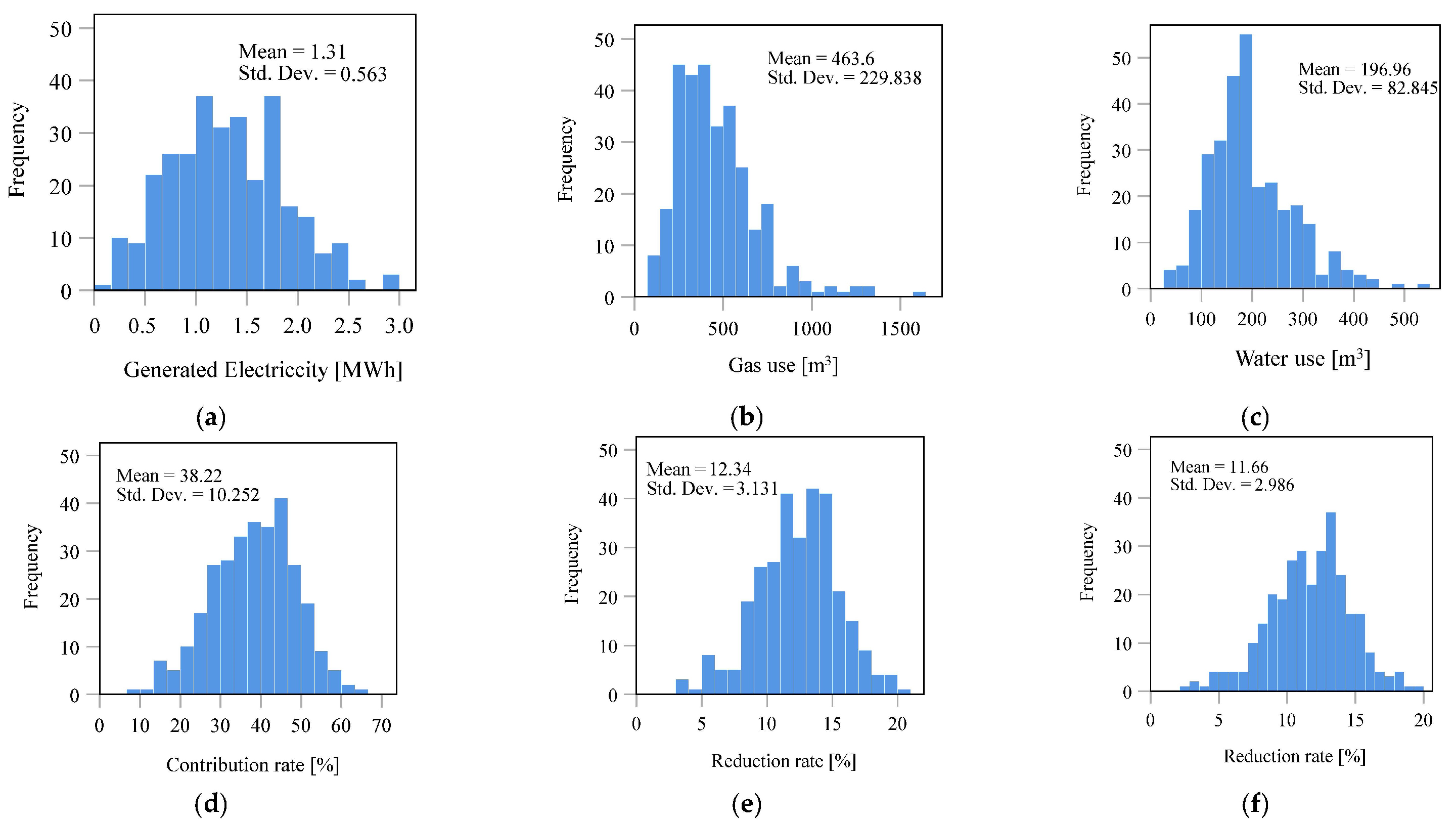

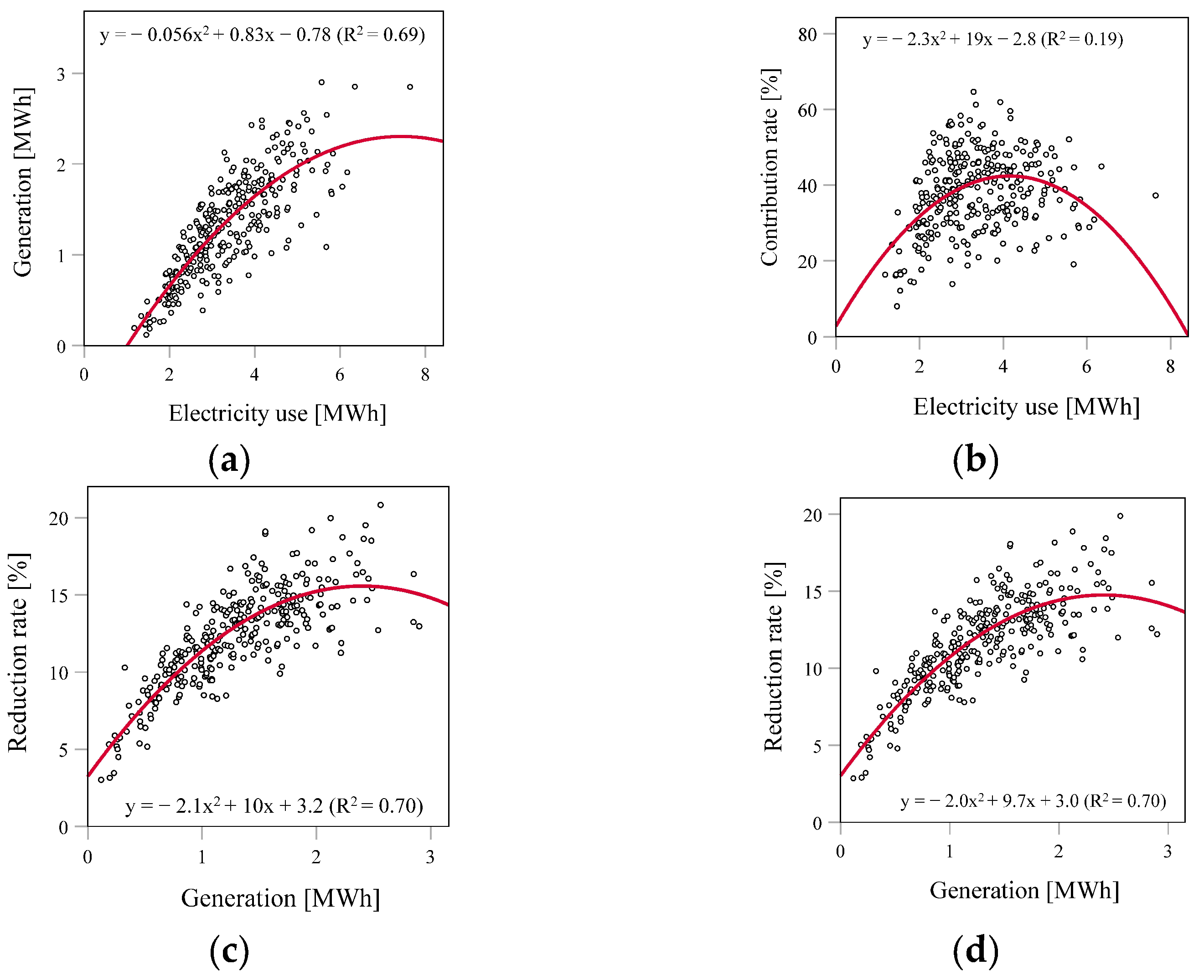

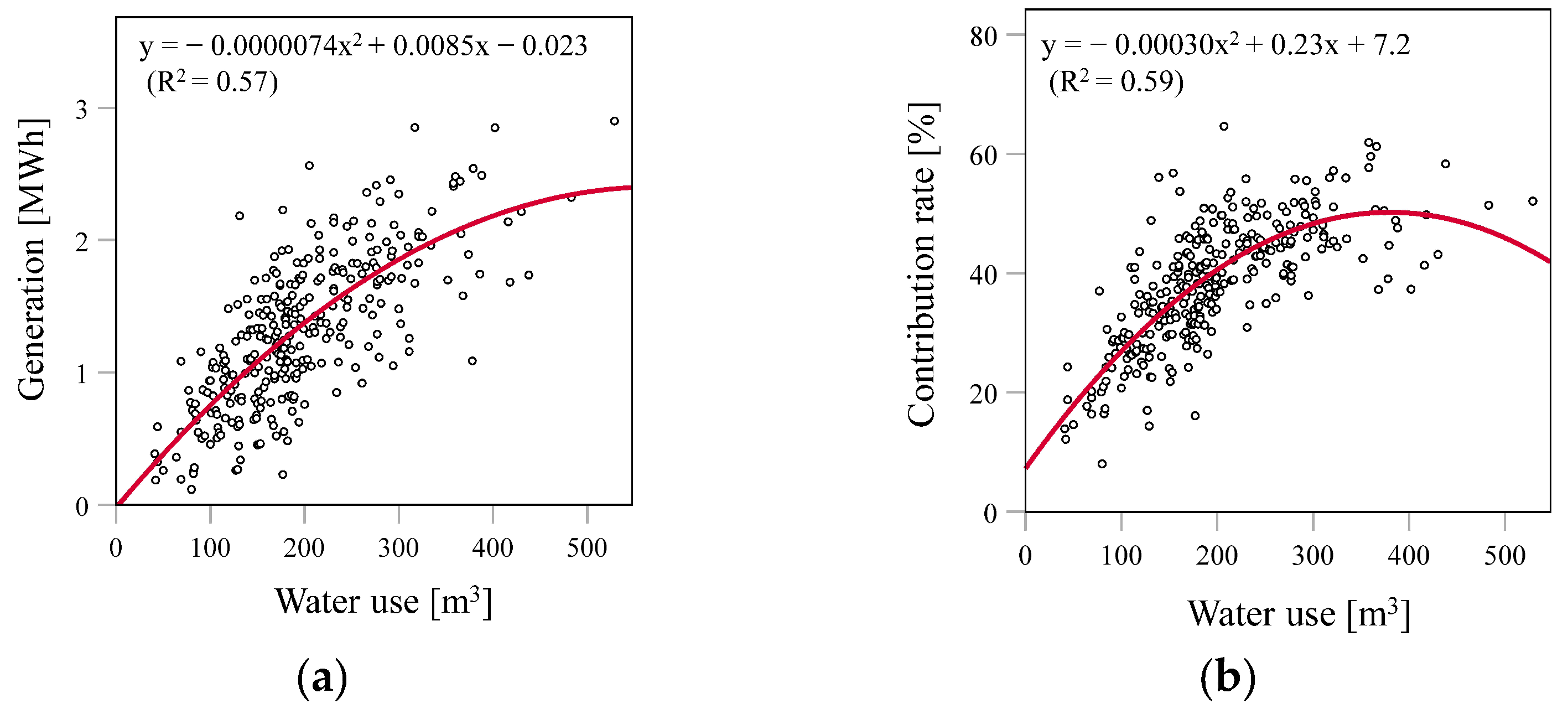
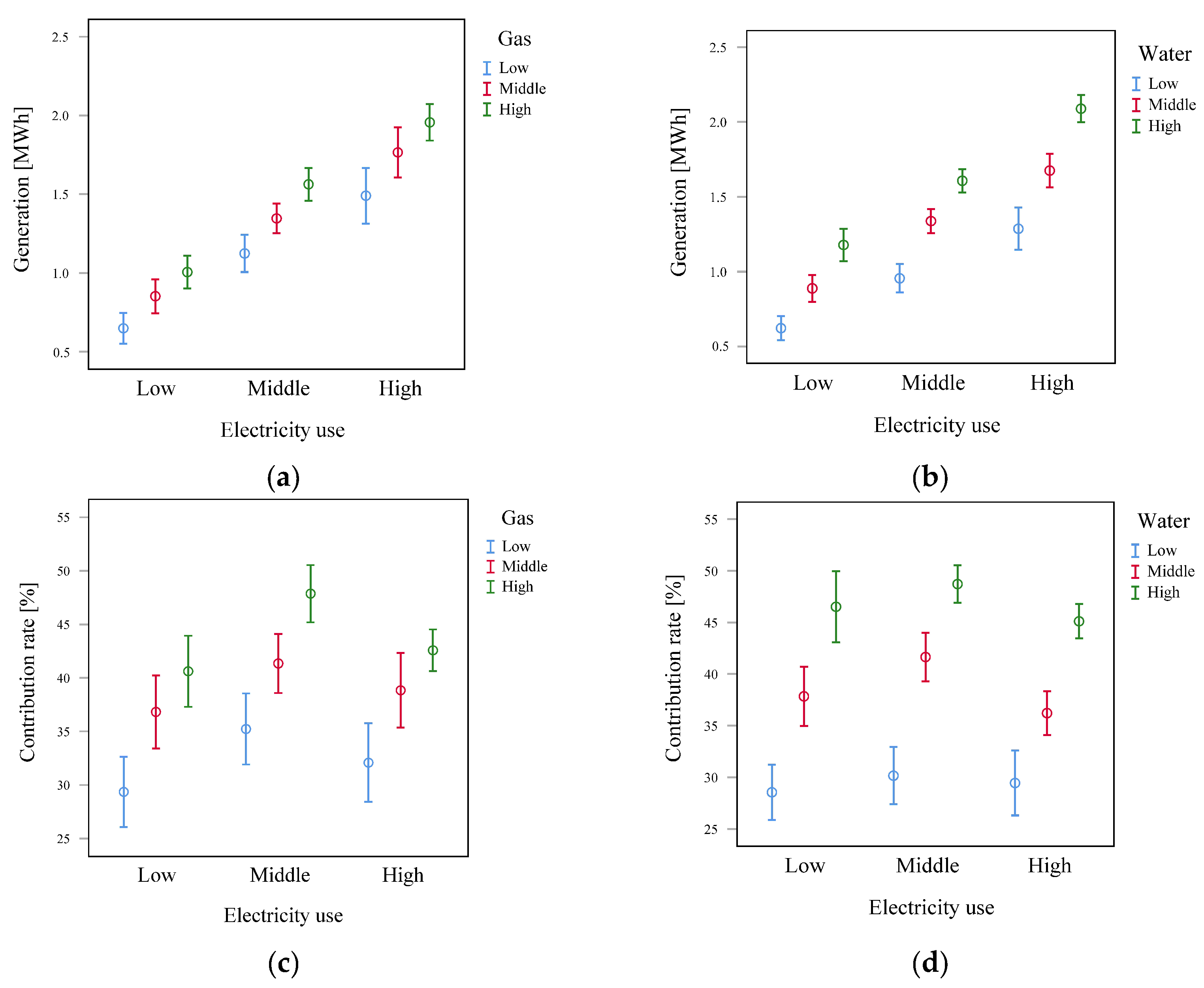

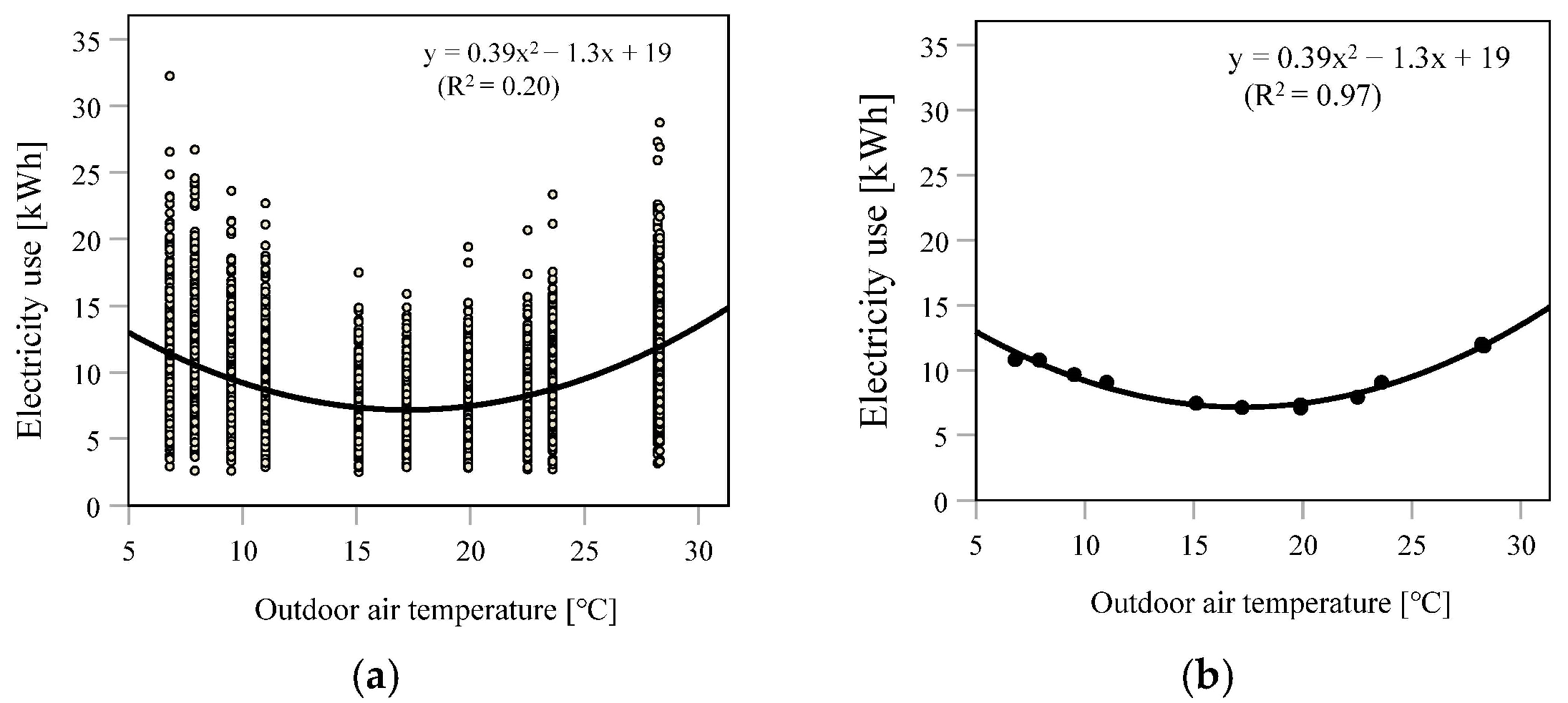

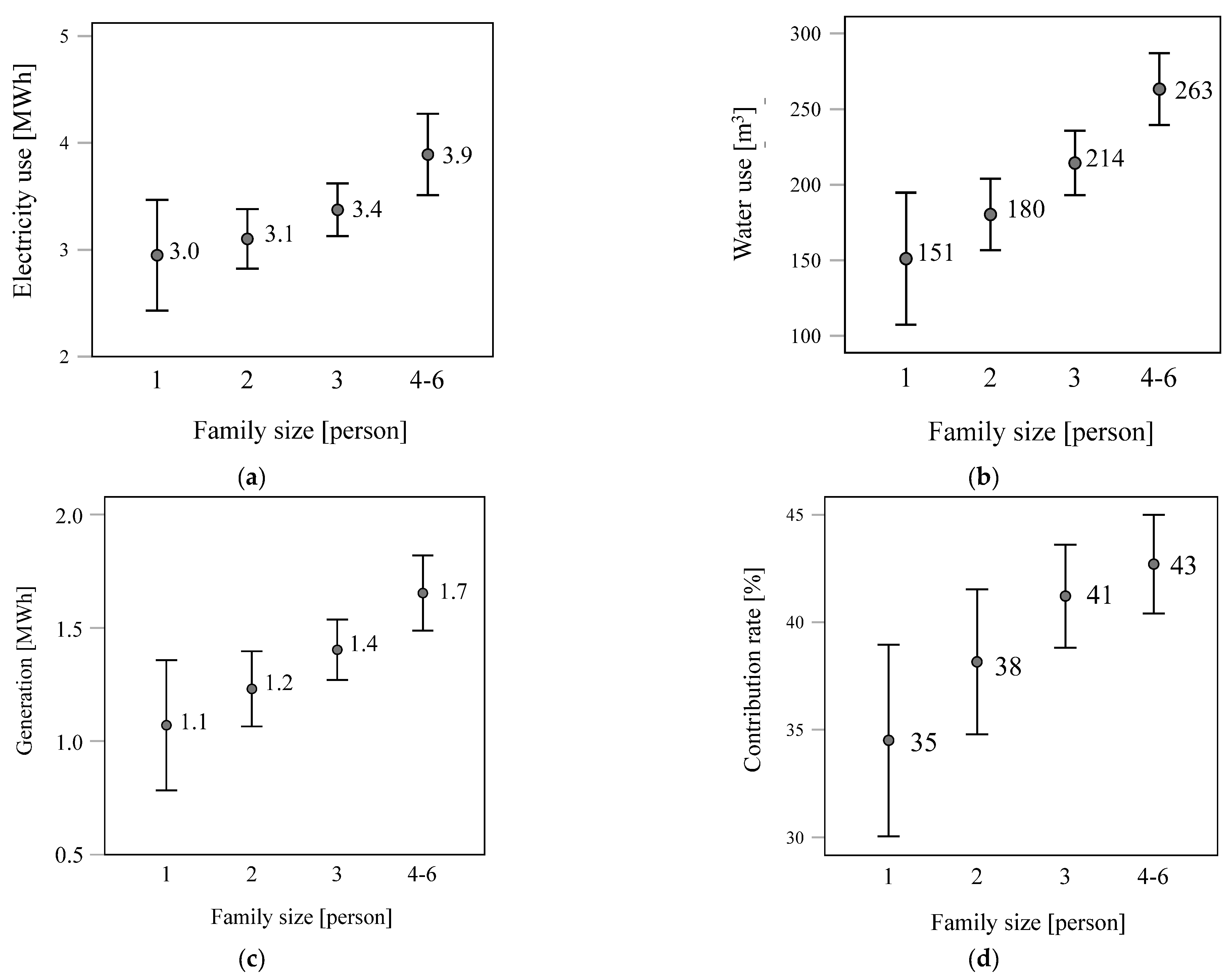
| Item | Value |
|---|---|
| Electricity generation output | (minimum) 200–750 W (rated) |
| Rated hot water output | 1080 W |
| Rated generation efficiency based on lower heating value | 39% |
| Rated heat recovery efficiency based on lower heating value | 56% |
| Rated integrated efficiency based on lower heating value | 95% |
| Water tank capacity | 147 L |
| Energy Source | Primary Energy Consumption (GJ) | CO2 Emission (t-CO2) |
|---|---|---|
| Electricity (MWh) | 9.76 GJ/MWh | 0.462 t-CO2/MWh |
| Gas (m3) | 0.045 GJ/m3 | 0.00224 t-CO2/m3 |
| Survey Period | Surveys Distributed | Surveys Collected |
|---|---|---|
| 1: February 2015 (before completion) | 104 | 77 |
| 2: November 2015 (immediately after completion) | 225 | 93 |
| 3: November 2016 (1 year after completion) | 356 | 115 |
| Description | Total | 3 LDK | 4 LDK | |||
|---|---|---|---|---|---|---|
| Avg. | S.D. | Avg. | S.D. | Avg. | S.D. | |
| Number of household members (n = 161) | 2.72 | 0.99 | 2.66 | 0.98 | 3.00 | 1.00 |
| Age of householder (n = 160) | 42.4 | 9.5 | 42.0 | 9.5 | 44.0 | 9.6 |
| Description | Type | Total | 3LDK | 4LDK | |||
|---|---|---|---|---|---|---|---|
| n | p (%) | n | p (%) | n | p (%) | ||
| Employment status of married women | Working outside | 90 | 64 | 77 | 66 | 13 | 54 |
| Full-time homemaker | 51 | 36 | 40 | 36 | 11 | 46 | |
| Age of youngest child | <5 years old | 56 | 62 | 43 | 60 | 13 | 68 |
| 6–15 years old | 23 | 25 | 19 | 26 | 4 | 21 | |
| >16 years old | 12 | 13 | 10 | 14 | 2 | 11 | |
| Author | Type of House | Method | Generation (MWh) | Contribution Rate (%) | Reduction Rate of Primary Energy (%) | Reduction Rate of CO2 Emission (%) |
|---|---|---|---|---|---|---|
| This study | Condominium | Measured data | 1.31 | 38.2 | 12.3 | 11.7 |
| Kuroki et al. [14] | Detached house | Simulation | 45 | 10 | 13–17 | |
| Wakui et al. [15] | Detached house | Simulation | 17 | |||
| Yamamoto et al. [18] | Apartment house | Simulation | 1.2 | 31 | 7 | |
| Yamamoto et al. [19] | Detached house | Measured data | 2.1 | 30 | ||
| Arinami et al. [22] | Apartment house | Simulation (Tokyo) | 7.3 |
| Items | Low | Middle | High |
|---|---|---|---|
| Electricity use (MWh) | 1.17–2.77 | 2.78–3.78 | 3.79–7.64 |
| Gas use (m3) | 85–341 | 343–519 | 521–1589 |
| Water use (m3) | 41–156 | 157–215 | 216–529 |
Publisher’s Note: MDPI stays neutral with regard to jurisdictional claims in published maps and institutional affiliations. |
© 2021 by the authors. Licensee MDPI, Basel, Switzerland. This article is an open access article distributed under the terms and conditions of the Creative Commons Attribution (CC BY) license (https://creativecommons.org/licenses/by/4.0/).
Share and Cite
Yoshida, K.; Rijal, H.B.; Bohgaki, K.; Mikami, A.; Abe, H. Energy-Saving and CO2-Emissions-Reduction Potential of a Fuel Cell Cogeneration System for Condominiums Based on a Field Survey. Energies 2021, 14, 6611. https://doi.org/10.3390/en14206611
Yoshida K, Rijal HB, Bohgaki K, Mikami A, Abe H. Energy-Saving and CO2-Emissions-Reduction Potential of a Fuel Cell Cogeneration System for Condominiums Based on a Field Survey. Energies. 2021; 14(20):6611. https://doi.org/10.3390/en14206611
Chicago/Turabian StyleYoshida, Kazui, Hom B. Rijal, Kazuaki Bohgaki, Ayako Mikami, and Hiroto Abe. 2021. "Energy-Saving and CO2-Emissions-Reduction Potential of a Fuel Cell Cogeneration System for Condominiums Based on a Field Survey" Energies 14, no. 20: 6611. https://doi.org/10.3390/en14206611
APA StyleYoshida, K., Rijal, H. B., Bohgaki, K., Mikami, A., & Abe, H. (2021). Energy-Saving and CO2-Emissions-Reduction Potential of a Fuel Cell Cogeneration System for Condominiums Based on a Field Survey. Energies, 14(20), 6611. https://doi.org/10.3390/en14206611








